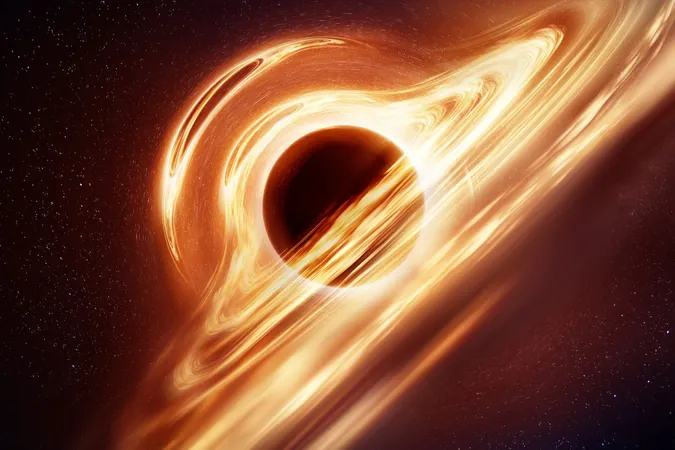
Surprising Discoveries from the James Webb Telescope: How Are Early Black Holes Forming?
2024-11-19
Author: Olivia
Introduction
The recent revelations from the James Webb Space Telescope have sent shockwaves through the astronomical community. As it returned stunning images of distant galaxies, scientists were astounded to find not just more galaxies than anticipated in the early Universe, but also massive black holes that seem to defy known laws of cosmic evolution.
Initial Reactions and Confusion
Initially, the astronomical world was agog, staring at galaxy formations that appeared brighter and more populous than theoretical models suggested. This was quickly followed by confusion and alarm, with many crying out that Webb had "broken" cosmology as we understand it. The findings prompted a surge of theories, as astronomers worldwide scrambled to explain how such significant black holes could exist so early in the Universe's history.
Understanding Black Hole Growth
Typically, black holes grow over time by accumulating material from their surroundings, but there exists a threshold—a theoretical limit known as the Eddington limit—which constrains the growth rate. This limit emerges from the balance of gravitational pull and the outward pressure exerted by radiation from the hot material encircling the black hole.
The Emergence of Massive Black Holes
So, when we observe black holes weighing tens of millions of times more than our Sun in the early Universe, the question arises: how did they become so massive? Researchers, including those behind a recent study, propose a compelling solution: the formation of intermediate-mass black holes directly in the intense environment of early galaxies.
Distinct Characteristics of Early Galaxies
The researchers suggest that galaxies in the early Universe exhibit distinct characteristics compared to their modern counterparts. In today’s cosmos, star formation is heavily influenced by feedback mechanisms that inhibit the birth of new stars. In contrast, they argue, during the Universe’s infancy, these feedback processes were far less effective, allowing for a more rapid and abundant formation of star clusters.
The Rapid Formation Process
The resulting clusters were denser and more massive than those we observe today. Such densely packed stellar environments facilitate interactions that could collapse the core of the cluster, leading directly to the formation of massive black holes without the need for supernova explosions. Remarkably, this process could occur in just a few million years.
Significance of Early Black Hole Formation
This rapid formation is crucial; as the clusters are soon scattered to the cosmic winds, having black holes form at this early stage means they could populate and gravitate toward the center of their galaxies. Through friction as they traverse the disc, they could merge, rapidly increasing in mass as gas funneled into the galactic core.
Unanswered Questions
While this emerging theory provides an exciting perspective that requires minimal adjustments to current physics, numerous questions remain. For instance, how might the cores of these dense clusters achieve the necessary conditions for black hole formation? Additionally, how will these black holes maintain their positions at the galactic center amidst potential galactic mergers that were more frequent during the Universe's chaotic youth?
Conclusion
The cosmological equation concerning early black hole formation remains unfinished. The current state of affairs calls for extensive research and scrutiny to validate this and the array of competing theories about how these fascinating cosmic giants came to be. A fresh era of exploration is upon us, and the results from Webb are just starting to unfold. This pivotal research could reshape our understanding of cosmic evolution, and the journey to uncover the secrets of early galaxies and their black holes is only just beginning. Stay tuned as we delve deeper into the mysteries of the Universe!









 Brasil (PT)
Brasil (PT)
 Canada (EN)
Canada (EN)
 Chile (ES)
Chile (ES)
 España (ES)
España (ES)
 France (FR)
France (FR)
 Hong Kong (EN)
Hong Kong (EN)
 Italia (IT)
Italia (IT)
 日本 (JA)
日本 (JA)
 Magyarország (HU)
Magyarország (HU)
 Norge (NO)
Norge (NO)
 Polska (PL)
Polska (PL)
 Schweiz (DE)
Schweiz (DE)
 Singapore (EN)
Singapore (EN)
 Sverige (SV)
Sverige (SV)
 Suomi (FI)
Suomi (FI)
 Türkiye (TR)
Türkiye (TR)